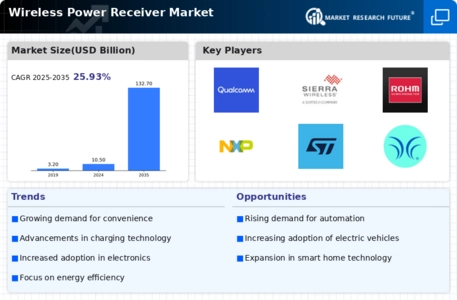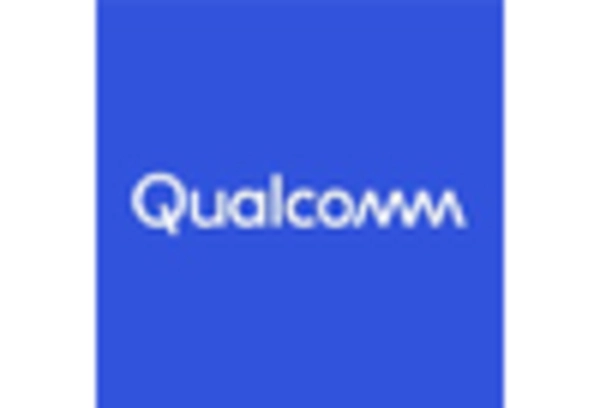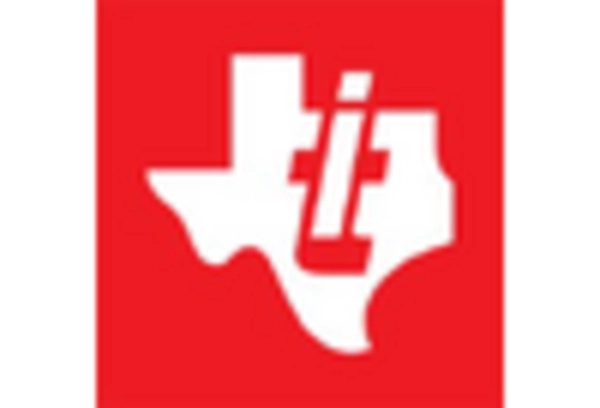-
MARKET INTRODUCTION
-
INTRODUCTION
-
SCOPE OF STUDY
- RESEARCH OBJECTIVE
- ASSUMPTIONS
- LIMITATIONS
-
MARKET STRUCTURE:
- GLOBAL WIRELESS POWER RECEIVER MARKET: BY TECHNOLOGY
- GLOBAL WIRELESS POWER RECEIVER MARKET: BY APPLICATION
-
RESEARCH METHODOLOGY
-
RESEARCH PROCESS
-
PRIMARY RESEARCH
-
SECONDARY RESEARCH
-
FORECAST MODEL
- MARKET DATA COLLECTION, ANALYSIS & FORECAST
- MARKET SIZE ESTIMATION
- MARKET CRACKDOWN & DATA TRIANGULATION
-
GLOBAL WIRELESS POWER RECEIVER MARKET: OVERVIEW
-
INTRODUCTION
- DEFINITION
- MARKET SEGMENTATION OF WIRELESS POWER RECEIVER MARKET
-
GLOBAL WIRELESS POWER RECEIVER MARKET: COMPETITIVE LANDSCAPE
-
KEY STRATEGIES AND DEVELOPMENTS
- ACQUISITIONS
- PARTNERSHIPS & COLLABORATIONS
- PRODUCT LAUNCH
- BUSINESS EXPANSION
- OTHERS
-
PORTER’S FIVE FORCES ANALYSIS
- THREAT OF NEW ENTRANTS
- BARGAINING POWER OF BUYERS
- BARGAINING POWER OF SUPPLIERS
- THREAT OF SUBSTITUTES
- INTENSITY OF COMPETITIVE RIVALRY
-
MARKET OVERVIEW
-
INTRODUCTION
-
MARKET DRIVERS
-
MARKET CHALLENGES
-
MARKET OPPORTUNITIES
-
GLOBAL WIRELESS POWER RECEIVER MARKET, ESTIMATION & FORECAST: BY TECHNOLOGY
-
INTRODUCTION
- MARKET STATISTICS
-
INDUCTIVE COUPLING
-
CAPACITIVE COUPLING
-
OTHERS
-
GLOBAL WIRELESS POWER RECEIVER MARKET, ESTIMATION & FORECAST: BY APPLICATION
-
INTRODUCTION
- MARKET STATISTICS
-
CONSUMER ELECTRONICS
- SMARTPHONES
- TABLETS
- WEARABLE DEVICES
- OTHERS
-
HEALTHCARE
-
AUTOMOTIVE
-
AEROSPACE AND DEFENCE
-
INDUSTRIAL
-
OTHERS
-
GLOBAL WIRELESS POWER RECEIVER MARKET, ESTIMATION AND FORECAST: BY GEOGRAPHY
-
INTRODUCTION
- MARKET STATISTICS
-
NORTH AMERICA
-
EUROPE
-
APAC
-
ROW
-
COMPANY PROFILES
-
SAMSUNG ELECTRONICS CO LTD.
- COMPANY OVERVIEW
- PRODUCT/BUSINESS SEGMENT OVERVIEW
- FINANCIAL UPDATES
- KEY DEVELOPMENTS
-
TEXAS INSTRUMENTS INC
- COMPANY OVERVIEW
- PRODUCT/BUSINESS SEGMENT OVERVIEW
- FINANCIAL UPDATES
- KEY DEVELOPMENTS
-
INTEGRATED DEVICE TECHNOLOGY, INC
- COMPANY OVERVIEW
- PRODUCT/BUSINESS SEGMENT OVERVIEW
- FINANCIAL UPDATES
- KEY DEVELOPMENTS
-
NXP SEMICONDUCTORS
- COMPANY OVERVIEW
- PRODUCT/BUSINESS SEGMENT OVERVIEW
- FINANCIAL UPDATES
- KEY DEVELOPMENTS
-
POWERMAT TECHNOLOGIES LTD
- COMPANY OVERVIEW
- PRODUCT/BUSINESS SEGMENT OVERVIEW
- FINANCIAL UPDATES
- KEY DEVELOPMENTS
-
WITRICITY CORPORATION
- COMPANY OVERVIEW
- PRODUCT/BUSINESS SEGMENT OVERVIEW
- FINANCIAL UPDATES
- KEY DEVELOPMENTS
-
POWERBYPROXI
- COMPANY OVERVIEW
- PRODUCT/BUSINESS SEGMENT OVERVIEW
- FINANCIAL UPDATES
- KEY DEVELOPMENTS
-
QUALCOMM INC
- COMPANY OVERVIEW
- PRODUCT/BUSINESS SEGMENT OVERVIEW
- FINANCIAL UPDATES
- KEY DEVELOPMENTS
-
TDK CORPORATION
- COMPANY OVERVIEW
- PRODUCT/BUSINESS SEGMENT OVERVIEW
- FINANCIAL UPDATES
- KEY DEVELOPMENTS
-
CONVENIENT POWER HK LIMITED
- COMPANY OVERVIEW
- PRODUCT/BUSINESS SEGMENT OVERVIEW
- FINANCIAL UPDATES
- KEY DEVELOPMENTS
-
OTHERS
-
List of Tables
-
GLOBAL WIRELESS POWER RECEIVER MARKET, BY TECHNOLOGY
-
GLOBAL INDUCTIVE COUPLING MARKET, BY REGION
-
GLOBAL CAPACITIVE COUPLING MARKET, BY REGION
-
GLOBAL WIRELESS POWER RECEIVER MARKET, BY APPLICATION
-
GLOBAL CONSUMER ELECTRONICS MARKET, BY REGION
-
GLOBAL HEALTHCARE MARKET, BY REGION
-
GLOBAL AEROSPACE AND DEFENCE MARKET, BY REGION
-
GLOBAL AUTOMOTIVE MARKET, BY REGION
-
GLOBAL INDUSTRIAL MARKET, BY REGION
-
NORTH AMERICA WIRELESS POWER RECEIVER MARKET, BY COUNTRY
-
NORTH AMERICA WIRELESS POWER RECEIVER MARKET, BY TECHNOLOGY
-
NORTH AMERICA WIRELESS POWER RECEIVER MARKET, BY APPLICATION
-
U.S. WIRELESS POWER RECEIVER MARKET, BY REGION
-
U.S. WIRELESS POWER RECEIVER MARKET, BY TECHNOLOGY
-
U.S. WIRELESS POWER RECEIVER MARKET, BY APPLICATION
-
CANADA WIRELESS POWER RECEIVER MARKET, BY REGION
-
CANADA WIRELESS POWER RECEIVER MARKET, BY TECHNOLOGY
-
CANADA WIRELESS POWER RECEIVER MARKET, BY APPLICATION
-
EUROPE WIRELESS POWER RECEIVER MARKET, BY REGION
-
EUROPE WIRELESS POWER RECEIVER MARKET, BY TECHNOLOGY
-
EUROPE WIRELESS POWER RECEIVER MARKET, BY APPLICATION
-
GERMANY WIRELESS POWER RECEIVER MARKET, BY REGION
-
GERMANY WIRELESS POWER RECEIVER MARKET, BY TECHNOLOGY
-
GERMANY WIRELESS POWER RECEIVER MARKET, BY APPLICATION
-
FRANCE WIRELESS POWER RECEIVER MARKET, BY REGION
-
FRANCE WIRELESS POWER RECEIVER MARKET, BY TECHNOLOGY
-
FRANCE WIRELESS POWER RECEIVER MARKET, BY APPLICATION
-
U.K. WIRELESS POWER RECEIVER MARKET, BY REGION
-
U.K. WIRELESS POWER RECEIVER MARKET, BY TECHNOLOGY
-
U.K. WIRELESS POWER RECEIVER MARKET, BY APPLICATION
-
ITALY WIRELESS POWER RECEIVER MARKET, BY REGION
-
ITALY WIRELESS POWER RECEIVER MARKET, BY TECHNOLOGY
-
ITALY WIRELESS POWER RECEIVER MARKET, BY APPLICATION
-
SPAIN WIRELESS POWER RECEIVER MARKET, BY REGION
-
SPAIN WIRELESS POWER RECEIVER MARKET, BY TECHNOLOGY
-
SPAIN WIRELESS POWER RECEIVER MARKET, BY APPLICATION
-
REST OF EUROPE WIRELESS POWER RECEIVER MARKET, BY REGION
-
REST OF EUROPE WIRELESS POWER RECEIVER MARKET, BY TECHNOLOGY
-
REST OF EUROPE WIRELESS POWER RECEIVER MARKET, BY APPLICATION
-
ASIA-PACIFIC WIRELESS POWER RECEIVER MARKET, BY REGION
-
ASIA-PACIFIC WIRELESS POWER RECEIVER MARKET, BY TECHNOLOGY
-
ASIA-PACIFIC WIRELESS POWER RECEIVER MARKET, BY APPLICATION
-
MIDDLE EAST & AFRICA WIRELESS POWER RECEIVER MARKET, BY REGION
-
MIDDLE EAST & AFRICA WIRELESS POWER RECEIVER MARKET, BY TECHNOLOGY
-
MIDDLE EAST & AFRICA WIRELESS POWER RECEIVER MARKET, BY APPLICATION
-
List of Figures
-
RESEARCH PROCESS
-
GLOBAL WIRELESS POWER RECEIVER MARKET: BY TECHNOLOGY
-
GLOBAL INDUCTIVE COUPLING MARKET: BY REGION (%)
-
GLOBAL CAPACITIVE COUPLING MARKET: BY REGION (%)
-
GLOBAL WIRELESS POWER RECEIVER MARKET: BY APPLICATION (%)
-
GLOBAL CONSUMER ELECTRONICS MARKET: BY REGION
-
GLOBAL HEALTCARE MARKET: BY REGION (%)
-
GLOBAL AUTOMOTIVE MARKET: BY REGION (%)
-
GLOBAL AEROSPACE AND DEFENCE MARKET: BY REGION (%)
-
GLOBAL INDUSTRIAL MARKET: BY REGION (%)
-
WIRELESS POWER RECEIVER MARKET SHARE BY REGION (2020 & 2027) (%)
-
NORTH AMERICA WIRELESS POWER RECEIVER MARKET, BY TECHNOLOGY (USD BILLION)
-
NORTH AMERICA WIRELESS POWER RECEIVER MARKET, BY APPLICATION (%)
-
NORTH AMERICA WIRELESS POWER RECEIVER MARKET SHARE BY COUNTRY (2016 & 2022) (%)
-
EUROPE WIRELESS POWER RECEIVER MARKET, BY TECHNOLOGY (USD BILLION)
-
EUROPE WIRELESS POWER RECEIVER MARKET, BY APPLICATION (%)
-
EUROPE WIRELESS POWER RECEIVER MARKET SHARE BY COUNTRY (2016 & 2022) (%)
-
ASIA-PACIFIC WIRELESS POWER RECEIVER MARKET, BY TECHNOLOGY (USD BILLION)
-
ASIA-PACIFIC WIRELESS POWER RECEIVER MARKET, BY APPLICATION (%)
-
ROW WIRELESS POWER RECEIVER MARKET, BY TECHNOLOGY (USD BILLION)
-
ROW WIRELESS POWER RECEIVER MARKET, BY APPLICATION (%)







Leave a Comment